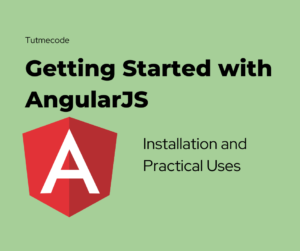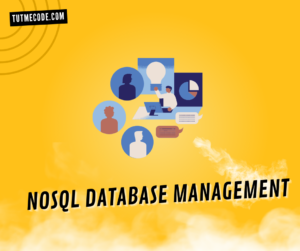Here are 20 interview questions with answers for a full-stack developer in 2023
- What is a full-stack developer?
A full-stack developer is a professional who has knowledge and expertise in both front-end and back-end development, as well as the ability to work with databases and manage the entire software development process.
- Explain the concept of responsive web design
Responsive web design is an approach to design and development that ensures a website can adapt and display properly on various devices and screen sizes. It involves using techniques like fluid grids, flexible images, and media queries
- What are the key skills required for a full-stack developer?
Some key skills for a full-stack developer include proficiency in front-end technologies like HTML, CSS, and JavaScript, as well as back-end technologies such as Node.js, Python, or Java. Knowledge of databases, version control systems, and problem-solving abilities are also important.
- How would you optimize the performance of a website or application?
Performance optimization can involve various strategies, including minimizing file sizes, leveraging caching techniques, optimizing database queries, and implementing content delivery networks (CDNs). It’s important to profile and analyze the application to identify bottlenecks and then address them accordingly.
- Explain the concept of RESTful APIs.
RESTful APIs (Representational State Transfer) are a set of architectural principles for designing networked applications. They use standard HTTP methods like GET, POST, PUT, and DELETE to perform operations on resources and provide stateless communication between the client and server.
- What is the purpose of Git, and what are some commonly used Git commands?
Git is a distributed version control system used for tracking changes in source code during software development. Commonly used Git commands include git clone, git add, git commit, git push, and git pull.
- How would you handle cross-site scripting (XSS) attacks in a web application?
To prevent XSS attacks, it’s important to validate and sanitize user input, encode output data, and implement content security policies (CSPs). By adopting these practices, you can mitigate the risk of malicious scripts being injected into your web application.
- Explain the concept of a relational database and provide an example.
A relational database is a type of database that organizes data into tables with predefined relationships between them. It uses structured query language (SQL) to manage and retrieve data. An example of a relational database is MySQL.
- What is the difference between SQL and NoSQL databases?
SQL databases are based on a relational model and use structured query language for data manipulation and retrieval. NoSQL databases, on the other hand, do not rely on a fixed schema and provide flexible data models. They are often used for handling large amounts of unstructured data.
- How would you handle authentication and authorization in a web application?
Authentication is the process of verifying a user’s identity, while authorization determines the user’s access rights. Common methods include using session-based or token-based authentication, integrating with OAuth or OpenID providers, and implementing role-based access control (RBAC) systems.
- What is the role of package managers in web development?
Package managers like npm (Node Package Manager) and Yarn are used to manage and install external libraries and dependencies in a project. They simplify the process of adding, updating, and removing packages, making it easier to handle complex web development projects.
- Explain the concept of containerization and its benefits.
Containerization involves encapsulating an application and its dependencies into a lightweight, isolated environment called a container. Containers provide consistency across different environments, improve scalability, and enhance resource utilization. Docker is a popular containerization platform.
- How would you handle asynchronous programming in JavaScript?
Asynchronous programming in JavaScript can be achieved through the use of callbacks, promises, or async/await syntax. These techniques help manage tasks that require time to complete, such as making API calls or performing I/O operations, without blocking the main execution thread.
- Describe the concept of serverless computing and its advantages.
Serverless computing allows developers to focus on writing code without worrying about infrastructure management. In this model, the cloud provider dynamically manages the allocation and scaling of resources based on the actual demand. It offers benefits such as reduced operational costs, automatic scaling, and increased development speed.
- How would you approach debugging and troubleshooting in a web application?
When debugging a web application, it’s essential to identify the problem by reviewing error logs, using debugging tools in the browser or integrated development environment (IDE), and employing techniques like logging and unit testing to isolate and fix issues.
- What are some security best practices you would follow in web development?
Some security best practices include validating and sanitizing user input, implementing secure communication using HTTPS, using parameterized queries to prevent SQL injections, encrypting sensitive data, and applying security patches and updates regularly.
- How would you ensure the accessibility of a website or application?
To ensure accessibility, it’s important to follow web standards, provide alternative text for images, use semantic HTML, make sure the website is keyboard navigable, and perform accessibility audits using tools like Lighthouse or Axe.
- Describe the concept of continuous integration and continuous deployment (CI/CD).
CI/CD is a software development approach that involves automating the process of integrating code changes, running tests, and deploying applications to production environments. It aims to increase development speed, improve code quality, and reduce the risk of deployment issues.
- How do you stay updated with the latest trends and technologies in web development?
As a full-stack developer, it’s crucial to stay updated with the latest trends and technologies. This can be achieved by reading technical blogs, following relevant communities and forums, attending conferences or webinars, and working on side projects to experiment with new tools and frameworks.
- Describe a challenging project or problem you encountered as a full-stack developer and how you resolved it.
When answering this question, provide a specific example that highlights your problem-solving skills and ability to handle complex challenges. Discuss the steps you took, the technologies or methodologies you employed, and the outcome of your efforts. Emphasize the lessons you learned from the experience.
Remember, interview questions can vary depending on the company and interviewer, so it’s essential to research the specific job requirements and prepare accordingly.




